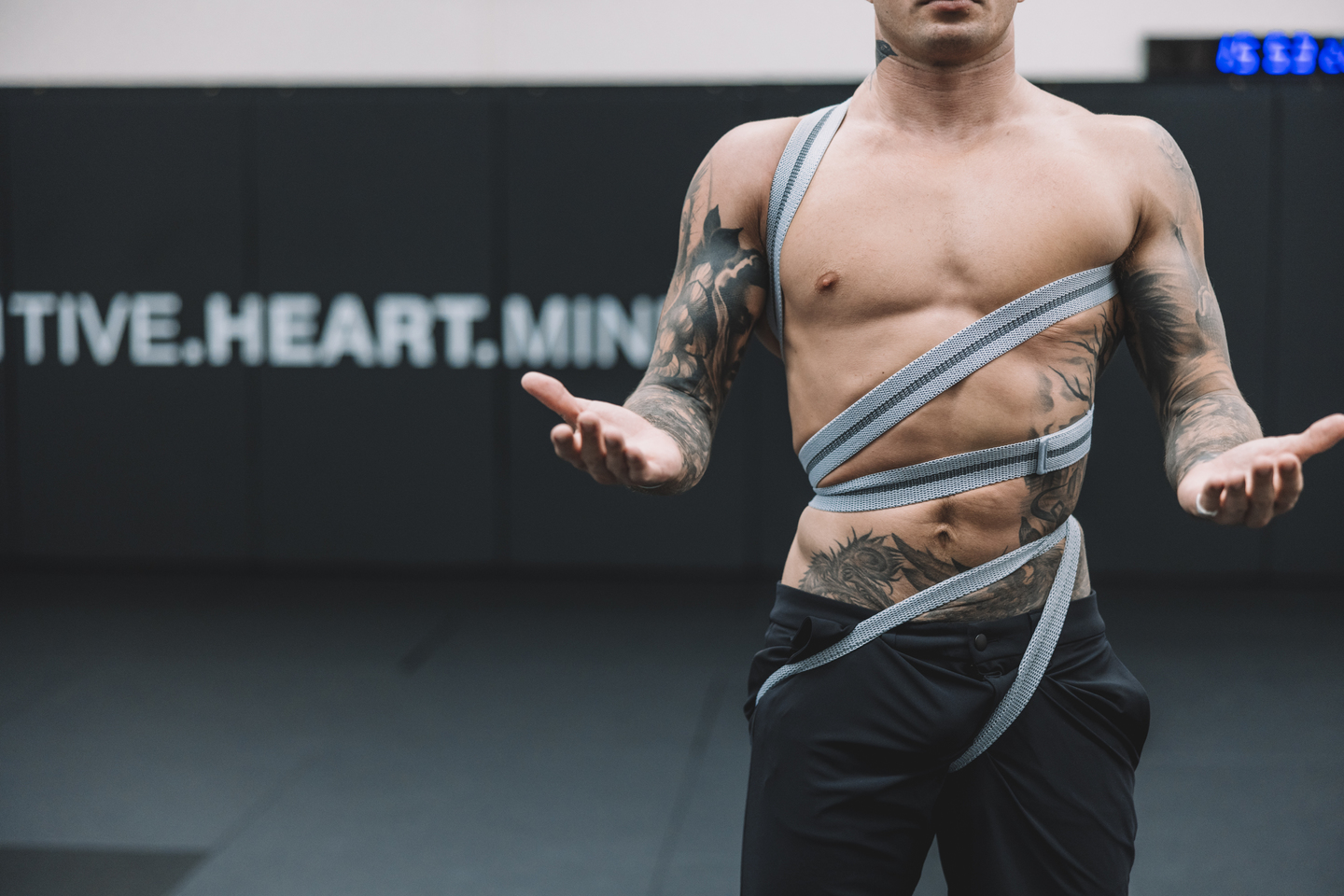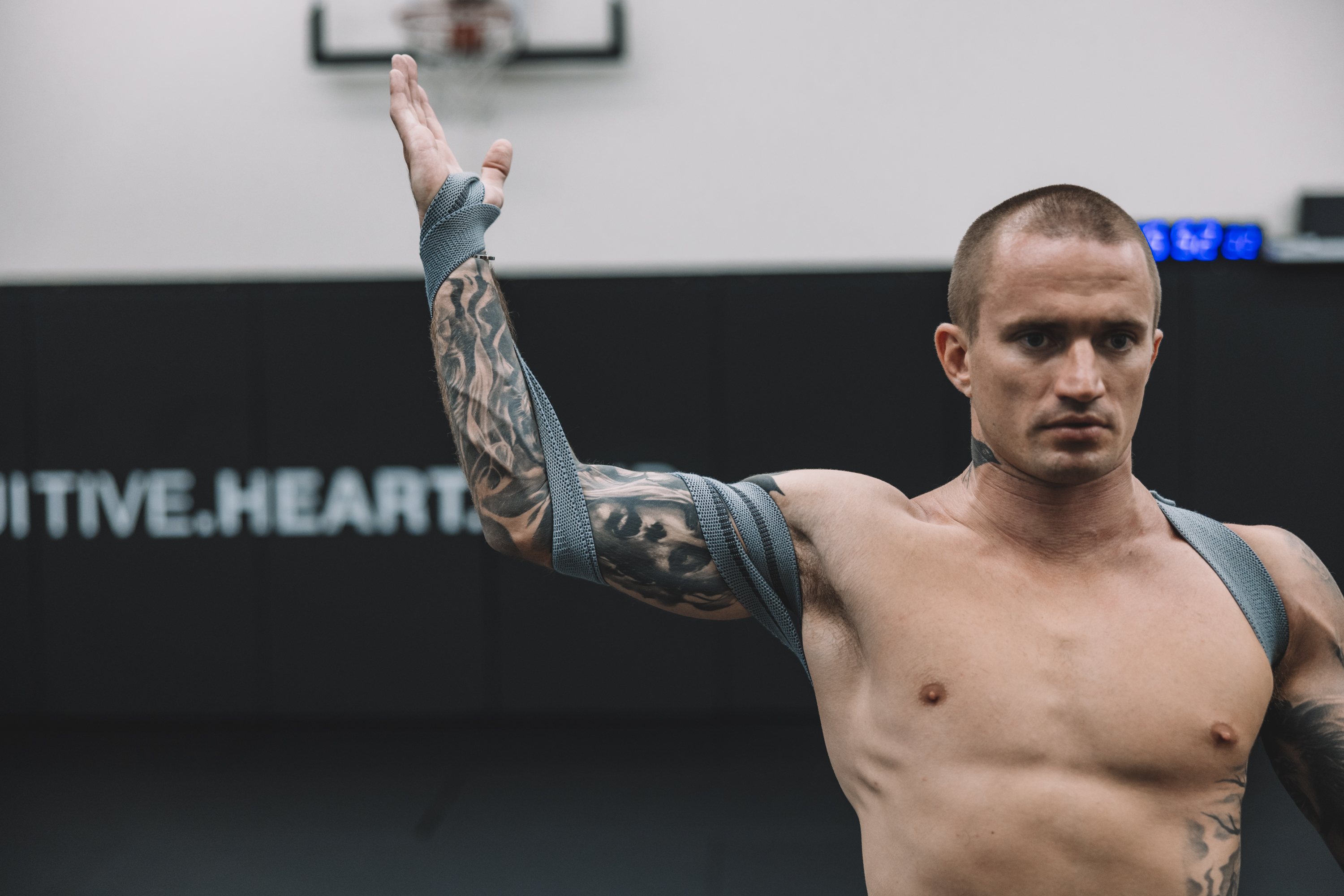
Ever caught your reflection in a shop window and winced at the sight of your hunched shoulders? You're not alone. The struggle for posture correction is real.
You see, poor posture isn't just about aesthetics. It's a sneaky culprit behind those nagging neck pains and chronic headaches you've been battling.
Fancy standing tall without the discomfort? Keen to discover exercises that can help transform your stance from slouchy to strong?
Aye! This read promises practical tips on tackling common posture problems head-on. We'll discover Corrective Culture's Postural Correction Program and delve into lifestyle factors impacting our alignment.
Come along as we journey through this guide designed with one goal - helping you reclaim good health by mastering perfect poise.
Table Of Contents:
- The Importance of Posture Correction
- Understanding Posture Problems
- The Corrective Culture Posture Program and Its Benefits
- Long-Term Benefits of Maintaining Good Posture
- Lifestyle Factors that Affect Posture
- Conclusion
- FAQs in Relation to Posture Correction
The Importance of Posture Correction
Imagine carrying a heavy backpack for hours on end. You'd likely start to slouch, right? This is what happens when we don't prioritise good posture - our body's alignment takes a hit. And just like that bag becomes more burdensome over time, so does poor posture.
Poor posture can lead to health problems such as back pain, neck pain, headaches, and body fatigue. These aren't just minor discomforts but potential chronic conditions that can disrupt your quality of life. It's comparable to attempting to jog with just one shoe on; you may be able to persist for a bit, but eventually it'll impede your progress.
Awareness and corrective measures are crucial here because the consequences aren't limited to physical issues alone. Did you know there’s even an emotional impact linked with bad posturing?
Posture and Mood: An Intriguing Connection
Intriguingly enough, research suggests that standing tall doesn’t just make us appear confident but also feel more positive. The mind-body connection plays out in full force here where your stance affects not only how others perceive you but how you perceive yourself.
We at Corrective Culture take this seriously which is why we’ve dedicated ourselves towards providing knowledge and tools necessary for maintaining optimal musculoskeletal health throughout ageing.
"I witnessed how posture indirectly affected how ‘hard’ someone would do their time. When someone walked into the unit with a tall confident posture they never got tested, for others who walked in with a kyphotic fearful position then they would be targeted by other inmates. When you change the body you change the emotions and therefore I seek to bring confidence into the clients I rehab."
- Callan Krause
Understanding Posture Problems
When we think about posture, images of hunched shoulders and rounded backs often spring to mind. But there's more to it than meets the eye. Misalignment can creep into our bodies in ways that aren't immediately obvious.
The Impact of Static Positions on Posture
Prolonged static positions play a significant role in this problem. Maintaining static positions for long periods of time can cause undue pressure to accumulate in the body, leading to aches and pains.
Rounded shoulders are a common outcome from extended hours slumped over computer keyboards or smartphones - known as 'tech neck'. This constant leaning forward creates muscle imbalances between the front and back muscles around your shoulder blades, causing them to become misaligned.
A similar situation occurs with hunched backs - but this time it's down to gravity pulling us forwards when we stand or sit without engaging our core muscles properly. The result? A stooped posture which places extra strain on your lower back and spine.
Exercise physiologists have found alignment issues can affect the efficiency of internal organ function too. So maintaining good posture isn't just about looking upright – it has profound implications for overall health.
The Corrective Culture Posture Program and Its Benefits
Corrective Culture's posture correction program isn't just about standing straighter. It's a holistic approach that helps you build strength, flexibility, and body awareness.
We've got the best brains on board for posture correction - our team of Chet practitioners, Callan Krause and Jake Stone. Their expertise lies in identifying weak spots and developing personalised plans to strengthen them. They'll be with you every step of the journey as you make progress towards a more upright posture.

You might be wondering why all this fuss about good stance? Well, you know how uncomfortable it is when trying to fit into tight jeans? That's what your organs feel like when crammed due to poor posture.
That's why at Corrective Culture, we developed our Postural Correction Program; a comprehensive and effective approach to help individuals maintain their musculoskeletal health. It offers the knowledge and tools necessary for long-term body care, focusing on improving posture, which can lead to numerous benefits.
If we had a dollar for every time someone thanked us for saving their back – well let’s just say Elon Musk would have some competition.
A Comprehensive Approach: The Corrective Culture Way
This program adopts a three-pronged strategy starting with self-tissue work designed to hydrate your body’s fascia - the connective tissue surrounding muscles & organs providing support & protection throughout your body.
This process is then reinforced through static stability exercises aimed at strengthening core muscle groups responsible for maintaining balance & stability.
The program concludes with dynamic stability workouts which you can use to maintain your posture regularly. To enhance the effectiveness of these exercises, tools such as Swiss ball, biofeedback bands and glute resistance bands are recommended but not compulsory.
- Foam Roller: An essential tool used in self-myofascial release, a technique that helps to ease tension in the fascia.
- Fascia Ball: Ideal for targeting smaller areas and trigger points.
- Lacrosse Ball: Perfect for deep tissue massage on hard-to-reach areas.
- Swiss Ball: Enhances core strength and facilitates self-myofascial release.
- Glute Resistance Bands: Target gluteal muscles for mobility and tension relief.
- Biofeedback Bands: Monitor physiological responses to reduce muscle tension and enhance relaxation.
With 365 days access to this online course, Corrective Culture's Posture Correction Program empowers individuals with knowledge & techniques necessary for lifelong musculoskeletal health maintenance. This holistic approach is perfect for those seeking an effective solution towards achieving good posture while relieving signs of anxiety and depression simultaneously.
Long-Term Benefits of Maintaining Good Posture
Maintaining good posture is more than just standing tall. It's about setting the stage for a healthier life as we age. Why is good posture so essential?
Well, think of your body like a well-built house. If you've got strong foundations (good posture), everything else will stand tall and proud - from reducing pain to improving overall health.
The Powerhouse: Your Spine
Your spine is essentially the powerhouse of your body, providing support and allowing movement. When aligned properly with good posture, it reduces unnecessary strain on our muscles and joints.
It also allows optimal function of internal organs which experts such as chiropractors and orthopaedic surgeons, have linked to improved digestion and lung capacity.
Pain Reduction
If you're experiencing chronic neck or back pain, maintaining good posture could be your saving grace.
A straightened stance alleviates pressure off sensitive areas in our bodies while evenly distributing weight across all muscle groups; this helps keep those pesky pains at bay.
A Healthy Mindset
Beyond physical benefits, holding yourself upright can boost confidence levels too.
Tell me this – don't you feel more powerful when standing tall? Well that's because there’s a direct link between how we hold ourselves physically and how we perceive ourselves mentally.
Lifestyle Factors that Affect Posture
Our everyday lifestyle choices, more than we realise, can have a big impact on our posture. Simple things like the way we sit at work or stand in queues and even our choice of footwear can affect how straight we stand.
The Influence of Footwear on Posture
High heels might make us look tall and stylish, but wearing them for long periods is not good news for your body alignment. Heels put your foot at an angle which then affects everything above it – ankles, knees, hips and spine. This imbalance forces other parts of the body to compensate causing stress and pain over time.
Sitting or standing in one place for extended periods also contributes to poor posture habits. Our bodies are designed for movement so being static places extra pressure on certain areas leading to muscle imbalances.
Your sitting posture while working plays a crucial role too. Many folks don't realise this until they start experiencing backaches or neck strains from hours spent hunched over their computers.
Maintaining good postural habits goes beyond just 'standing up straight'. It involves making small changes throughout your day-to-day activities - choosing comfortable shoes over high heels when possible; getting up from your desk every hour; consciously adjusting your sitting position - all these contribute towards better overall health by keeping chronic pains at bay.
Conclusion
Cracking the code to posture correction,
Maintaining good posture reaps benefits beyond belief – reducing pain and boosting confidence are just the start.
With consistent effort and a commitment to proper poise, you'll discover a world of comfort and self-assurance that truly transforms your well-being.
So, make no mistake, prioritising posture is worth every bit of effort, and the rewards are boundless!
Embrace the positive ripple effects it can have on your overall health and daily
FAQs in Relation to Posture Correction
Can you correct years of bad posture?
Absolutely. Our Corrective Culture Postural Correction Program regular exercise, the right lifestyle changes, it's possible to fix long-standing posture problems.
Do posture correctors really work?
Sure do. Posture correctors can guide your body back into proper alignment but remember they're not a magic cure-all. You'll still need exercises and habit change for real results.
How can I correct my posture?
You could start with daily stretching routines, strength training workouts. Our Corrective Culture Postural Correction Program for those looking to fix their posture.
How many years does it take to correct posture?
No clear-cut answer here – everyone's different. But consistency is key so stick at it every day and over time you should see improvements in your stance.











